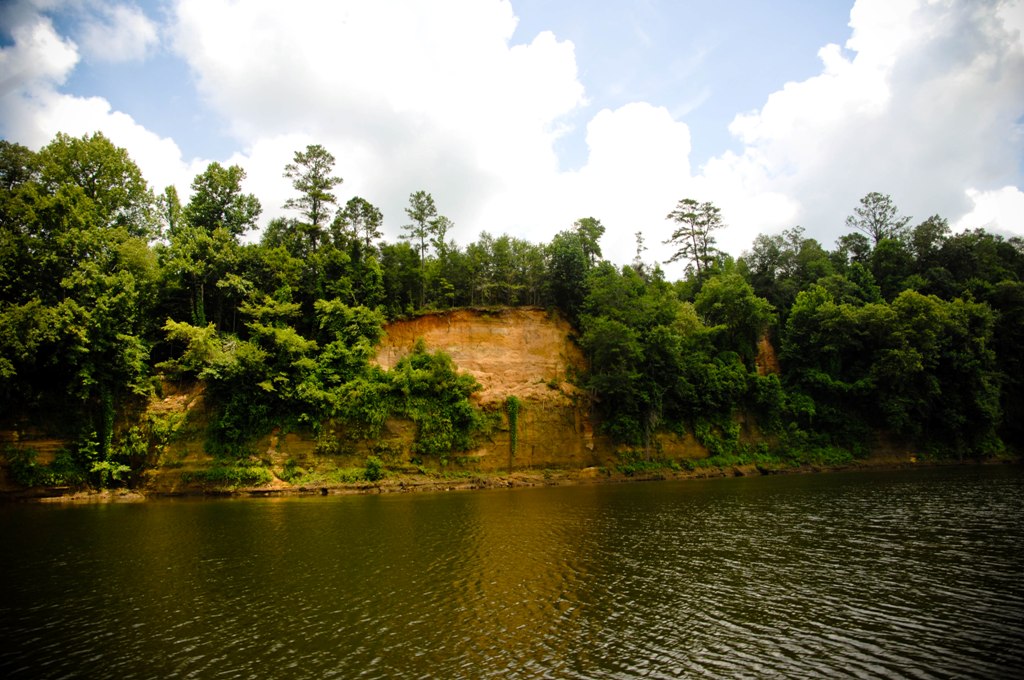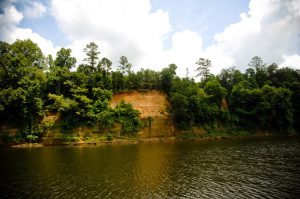
By Chris Bryant
Almost 500 years after Hernando De Soto explored the Americas, University of Alabama researchers are reinvigorating efforts to break one of many links between fruitless searches and the Spanish conquistador.
Unsuccessful searches and De Soto go together like Custer and bungled strategy. The 16th century explorer failed to locate an acceptable place to form a permanent Spanish colony in what became the United States. He was also unsuccessful in his purported quest for gold (a search that, UA researchers say, wasn’t as high a priority as it’s often portrayed).
One thing he did discover – on Oct. 18, 1540 – was how a band of Mississippian Indians, led by Chief Tascalusa, would fight “like fierce lions,” as one eyewitness wrote, in attempts to save their freedom, possessions and lives. Although De Soto and his army of some 600 won the bloody battle that day in a town the Indians called Mabila, in many ways it’s also the day he lost the proverbial war – his quest to colonize the area for Spain. And while De Soto escaped the battle with non-fatal wounds, his subsequent reactions to it led to his death.
MABILAS EVERYWHERE
But not even his passing broke all the links between De Soto and unsuccessful searches. Since 1829, many have placed dots on maps and declared them as representations of where the now 469-year-old battle occurred. From the southern to northern-most dot is a range of more than 100 miles.
“There are Mabilas all over the place,” says Dr. Jim Knight, a professor of anthropology at The University of Alabama, of attempts to locate the battlefield.
During just the last 35 years, experts have pinpointed various locations within an eight county region across southwest and west central Alabama as the site. None of those proposed sites have settled the argument or stood up against additional scrutiny, Knight says.
“One can rightfully say that the lost battle site of Mabila is the predominant historical mystery of the Deep South,” writes Knight in an introduction to “The Search for Mabila,” a work he edited and which The University of Alabama Press published earlier this year.
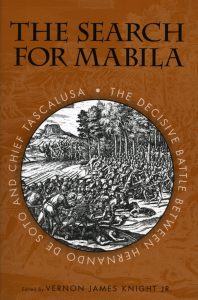
The 277-page book draws from 15 direct contributors with expertise in cultural anthropology, folklore, archaeology, geology, geography or history. One-third of the contributors are current or former University of Alabama faculty members.
And while Knight believes the book outlines the correct approach (a multidisciplinary one) and some of the best techniques to locate the site – and he holds out hope that the mystery will be solved in his lifetime – he also freely admits he does not know the location.
“The whole history of this thing, for 500 years, has been people constantly saying, ‘I know where it is,’ and none of them have been right,” says the College of Arts and Sciences researcher. “So, for me to sit here this morning and say, ‘I’m different,’ I know where it is,’ that would be nonsense. No, I don’t know where it is. The whole idea is to form a sort of model of where it might be and match that with the artifacts. Sooner or later, we’re going to hit on a model that works a whole lot better – fits the archaeological sites, fits the geography better, and that one will take us there. Ultimately, if you follow the pattern we’ve established here, it will get you there.”
A BATTLE WITHOUT A WINNER
What De Soto got when he and his men walked inside the wall-fortified town of Mabila was – depending on which historical account you believe – an ambush. Initially, the Spanish army retreated, then re-grouped, surrounded the town, and charged it. The fight lasted most of the day, and the Spaniards destroyed the town with fire, killing men, women and children.
It’s unclear whether Chief Tascalusa survived or died in the fight, Knight says, but it is clear the battle changed the course of history – wiping out an entire town and forever altering the Spaniards’ plans.
“It was devastating,” Knight says of the battle’s impact on De Soto’s army. The fiery, bloody battle annihilated virtually all the Indians present (historical accounts indicate thousands of Indians died), and about 20 Spanish soldiers were killed and some 250 wounded.
And, in a striking blow to their planned efforts of persuading others to join the would-be colonists, De Soto and his army lost many of their possessions, including spoils stolen from the Indians, some of which were set aside with hopes of enticing others.
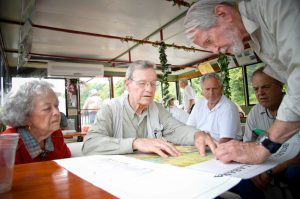
The Spanish army was en route to the port of Achusy on the Gulf Coast, Knight says, where the colony would be established and De Soto would serve as governor. The battle changed everything.
“Those people in the army didn’t intend to go back (to Spain),” Knight says. “They intended to settle there. De Soto would have gone back to Cuba and possibly back to Spain with the big box of pearls that he had gotten at Cofitachequi and said, ‘look, this land is a fairly rich land. You really need to come settle in the new colony.’ But, they lost the pearls. They lost that proof.
“You don’t want to go back to Cuba and say, ‘the very last thing that happened to us was we got our butts kicked.’ Nobody is going to want to come live there.”
So, with an army exhibiting plummeting morale and in dire need of supplies, De Soto headed – not for his supply ships waiting along the coast – but north.
“That was almost madness to do what he did,” Knight says. “His supply ships were just six days walk away. They needed those supplies. It was starting to get cold. Turning around and marching straight north and not even sending any messenger to the coast — he was just hoping to avoid a mutiny. And, of course, De Soto died (about two years later on the banks of the Mississippi River) as a result of that decision.”
BURIED BY TIME
While the battle site remains hidden today, the impact of its participants is not. Tasculusa, whose name means Black Warrior, is the namesake for both the river that flows through modern day Tuscaloosa and the city itself. Attempts to trace De Soto’s route across the nation’s eastern half has resulted in two federal government commissions, a flurry of attempts to attract tourists, signage across the purported routes, and plenty of arguments.
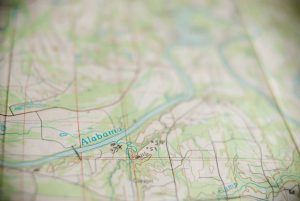
There are many reasons, Knight says, why locating the battle site is challenging. For one, there are four primary historical accounts of the battle, but they contain multiple discrepancies. As explorers, the Spaniards didn’t know where they were and recorded their locations using the names of Indian towns.
“It’s like writing a whole narrative on a ribbon and trying to fit that ribbon onto a map somehow. It’s not easy, and no one has ever done it successfully.”
Locations of many of those former towns are not known today and relying on where similarly named towns were two centuries later will not cut it, Knight says.
“Just because a group exists in one place in the 18th century, doesn’t mean much about where they were in the 16th century,” Knight says. “The entire population of one town would pack up and move 90 miles downriver, or move halfway across Georgia and then move back again – the whole town – taking the name with it.”
And, of course, it’s been nearly 500 years. The landscape has changed, figuratively and literally.
“Almost every stretch of land down there has been plowed at some point, usually for many decades,” Knight says, “and that basically erases the top six inches of everything. You would have to dig down below that disturbed plow level to find anything intact.”
While some historical accounts, recorded in Spanish and Portuguese, have survived intact, word meanings have changed through the centuries, making interpretations difficult.
A WIDE CLUE
That’s not to say there aren’t clues. There are some big ones and at least one wide one, you might say.
“There is almost complete consensus that the river of Piachi they crossed several days before the battle is the Alabama River and not some other river,” Knight says. “It was a big enough river that it delayed them. They had to wait to build rafts to get across.”
Drawing on historical accounts, the researchers know the number of days between crossing the river until the battle. Believing that the large caravan – which included not only soldiers, but Indian servants on foot carrying large baskets of gear, as well as a herd of pigs – could only travel about 12 miles a day also helps narrow the distance Mabila could be from other points recorded on the journey.
“The army can only move as fast as the slowest baby pig,” Knight says.
Another big clue deals with a description of a river front town, Piachi, which the army departed only two days before the battle. One of the Spaniards accompanying the group said the “town was high on a craggy bluff.”
“There aren’t many places on the Alabama River that are like that,” Knight says. “Another clue is that the day before they went to Mabila they ran into lots of small Indian settlements – farmsteads, basically – and they were looting those all the way to the main town. So, we’re talking about an area where there are a lot of archaeological sites, not just one, that all date to the same period, 1540.”
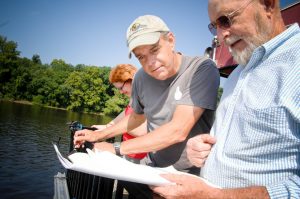
So, if the site is one day located, what will archaeologists find?
“The typical artifacts will be basically two kinds, Indian pottery and burned daub – plaster from the walls,” Knight says. “Since that entire town was burned – and that’s unusual – there will be tons of that daub. It preserves well because it bakes in the fire. It will look like red brick-like stuff, everywhere.”
Designs on the Indian pottery found at the site would help the researcher verify the time period is from the one sought. Small triangular arrow points, typical of the period, would also be present as would possibly a few Spanish artifacts, Knight says.
Since September 2006, Knight and the group of interdisciplinary researchers, which includes, among others, Drs. Lawrence Clayton and Michael Murphy, currently of UA, Doug Jones, a professor emeritus at UA, and Dr. Neal Lineback, a former UA geography professor, have pored over documents, retranslated historical texts, debated theories, analyzed maps and conducted one survey which ruled out a site.
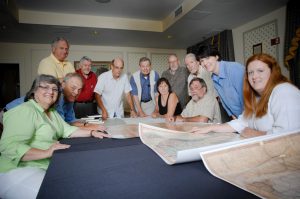
Now, they are focusing on two areas in Wilcox County and another area in southern Dallas County. The researchers hope to later schedule an artifact identification day where residents of Wilcox County can bring in artifacts they have previously found and discuss them with the researchers. Simultaneously, the researchers are looking at ways to attract funding to pay for more survey work in the areas.
“The point of the book is not a treasure map to Mabila,” Knight says. “What we want to do is make sure that all that good work that was done in the last couple of decades is not forgotten and to establish a baseline … about the right and wrong ways to go about something like this. And, hopefully, if some interested citizen can pick the book up and read a couple of chapters and go out and find it one day, good for them.”
But, until such a time, the search goes on.
Contributors to “The Search for Mabila” are:
Kathryn E. Holland Braund
Lawrence A. Clayton
Linda Derry
Robbie Ethridge
Ned J. Jenkins
Douglas E. Jones
Vernon James Knight Jr.
George E. Lankford
Neal G. Lineback
Michael D. Murphy
Amanda L. Regnier
Craig T. Sheldon Jr.
Gregory A. Waselkov
Eugene M. Wilson
John E. Worth
